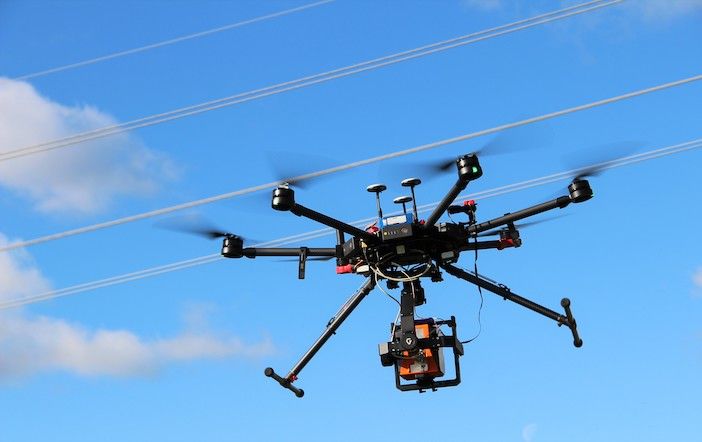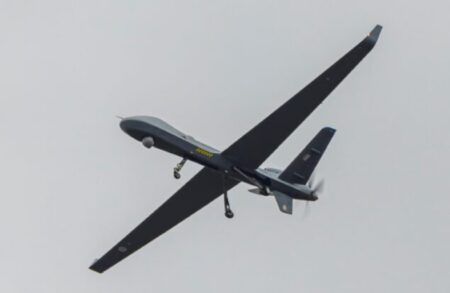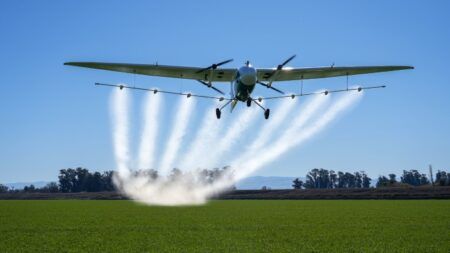Researchers in Finland are to run flight trials of swarms of drones equipped with AI to detect and prevent forest fires.
The two year FireMan project aims to develop and test efficient ways to quickly detect small and recently started forest fires and monitor them in real time.
Researchers will test the drones, AI and communications systems during prescribed burning by Metsähallitus and the Finnish Forest Centre. The first drone flights are planned to take place as early as the spring of 2022.
A demonstration will be held at the end of the project in which drones are operating as a group in observing and monitoring a situation such as a forest fire.
“We’re developing a new AI-based drone technology to quickly detect forest fires and provide situational awareness when extinguishing the fires,” said Professor Eija Honkavaara, the FireMan project leader from National Land Survey of Finland (NLS), part of the Finnish Geospatial Research Institute (FGI).
More than 400,000 hectares of forest burned down in 2019 and half a million hectares was lost last year in Europe. Forest fires are expected to increase due to global warming.
Controlling forest fires is of particular interest in Finland where 75% of the land area is forest.
Communication challenges
The FireMan project involves several universities and research centres, which are developing solutions for forest fire control and simultaneously conducting scientific research in autonomous flying, digital modelling and communication.
The task of the FGI is to develop a decision support system based on digital twins for controlling forest fires, including a real-time digital modelling of the forest fire area. The model will also offer accurate data on how the fire is progressing.
“Drones can help us in providing real-time information on how the fire front is progressing and how high and hot the flames are. We’re developing methods to locate a swarm of drones and produce remote sensing data in real time. In addition, we’re developing sensor technology that surpasses the ability of the human eye in terms of seeing through smoke,” said Honkavaara.
Researchers from the University of Jyväskylä are researching forecast models for fire progression and ways to optimise AI algorithms in real-time analytics.
“Forest fire progression can be modelled numerically, considering topographical features, vegetation and wind direction. In this project, we use forecast models to teach the AI so that it can assess the fire progression based on remote sensing data collected in real time,” said Associate Professor Ilkka Pölönen from the University of Jyväskylä.
Meanwhile researchers from the University of Oulu are focusing on crisis communication and determining the possibilities of 5G and 6G networks. “Drones will form a new device category in the future and create new requirements for mobile networks. The performance of the broadband connection from the device to the network will be crucial. The connections will also have to work reliably in remote areas and at typical flight altitudes,” explains Tuomo Hänninen from the University of Oulu.
Drones that can work as a team
The drones are being developed to be able to monitor wide forest areas and react and act independently as required in fire situations. The FireMan project will also develop the drones to operate as a group in a fire situation.
During the project, the researchers will test how a swarm of drones will cooperate in a forest fire situation. The VTT Technical Research Centre of Finland is responsible for optimising the swarm of drones in crisis situations and developing operating concepts in cooperation with various stakeholders.
“The study of the FireMan consortium aims to combine various AI technologies from self-correcting forecast models to autonomous cyber-physical systems,” said research professor Fabrice Saffre from the VTT Technical Research Centre of Finland.
“In practice, the research conducted in this project focuses on seamless cooperation between humans and autonomous systems. We need to consider all of the existing knowledge and the needs of users. We will therefore invite all interested parties to jointly develop all of this with us,” added Hannu Karvonen from the VTT Technical Research Centre of Finland, who is leading the project team responsible for planning operating concepts.





